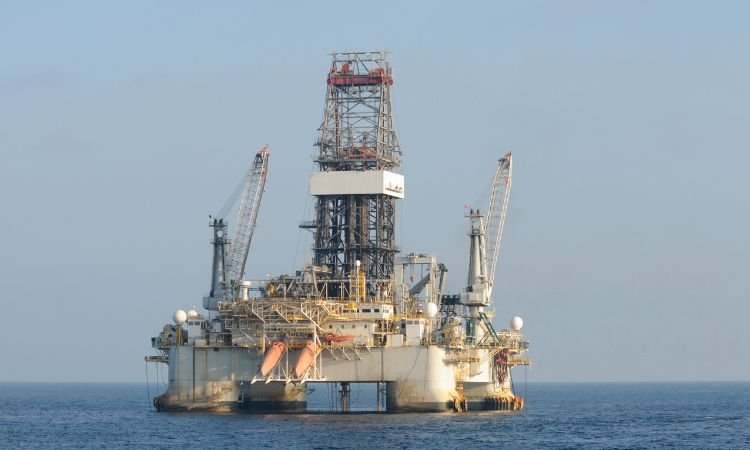In the forecast period of 2024-2032, the global deepwater and ultra-deepwater drilling market size is expected to grow at a CAGR of 9%. This remarkable growth reflects the increasing importance of deepwater and ultra-deepwater drilling in the global energy landscape. As the search for new oil and gas reserves intensifies, deeper waters hold the key to untapped resources that are crucial for meeting the rising global energy demand. This blog post aims to provide an in-depth analysis of the market, covering various aspects such as market segmentation, regional analysis, market dynamics, competitive landscape, and key trends.
Market Segmentation by Application
Deepwater Drilling
Deepwater drilling refers to the process of exploring and extracting oil and gas reserves located at depths between 1,000 and 5,000 feet below the water surface. This segment is characterized by significant investments in advanced drilling technologies and robust infrastructure. Key regions for deepwater drilling include the Gulf of Mexico, the North Sea, and offshore Brazil. The market share for deepwater drilling is substantial, with growth projections indicating a steady increase due to ongoing projects and new discoveries.
Ultra-Deepwater Drilling
Ultra-deepwater drilling involves exploring and extracting oil and gas reserves located at depths greater than 5,000 feet. This segment is poised for rapid growth, driven by technological advancements and the discovery of large reserves in ultra-deep waters. Key regions include the Gulf of Mexico, offshore West Africa, and the South China Sea. The market share for ultra-deepwater drilling is expected to grow significantly, fueled by high energy demand and the need to access previously unreachable reserves.
Other Applications
Other applications within the deepwater and ultra-deepwater drilling market include exploration activities, rig operations, and well maintenance. These segments are witnessing emerging trends and innovations aimed at enhancing efficiency and reducing operational costs. The integration of digital technologies and automation is playing a crucial role in transforming these applications.
Regional Analysis
North America
North America, particularly the Gulf of Mexico, is a major hub for deepwater and ultra-deepwater drilling activities. The region’s market size is substantial, supported by robust infrastructure and favorable regulatory frameworks. Growth trends indicate increased investments in exploration and production activities.
Europe
Europe, with key regions such as the North Sea, is another significant market for deepwater drilling. The market size and growth trends are driven by ongoing projects and the exploration of new reserves. Investments in advanced technologies are enhancing the region’s drilling capabilities.
Asia-Pacific
The Asia-Pacific region, including the South China Sea and offshore Australia, is emerging as a key player in the deepwater and ultra-deepwater drilling market. The market size is expanding, supported by economic growth and increasing energy demand. Key projects and investments are driving the region’s growth.
Latin America
Latin America, particularly offshore Brazil, is a major player in the deepwater drilling market. The region’s market size is considerable, with growth trends indicating increased exploration and production activities. Significant investments in infrastructure and technology are supporting the region’s market expansion.
Middle East and Africa
The Middle East and Africa, including offshore West Africa, are emerging as important regions for deepwater and ultra-deepwater drilling. The market size is growing, driven by new discoveries and increased investments.
Market Dynamics
SWOT Analysis
Strengths
- Advanced technology and infrastructure.
- Strong investment from key players.
Weaknesses
- High operational costs.
- Environmental concerns and regulatory challenges.
Opportunities
- New discoveries and untapped reserves.
- Growing global energy demand.
Threats
- Regulatory challenges and environmental concerns.
- Volatility in oil prices and geopolitical risks.
Porter’s Five Forces Analysis
Threat of New Entrants
The threat of new entrants is low due to high barriers to entry, including significant capital investment and advanced technological requirements.
Bargaining Power of Suppliers
Suppliers hold moderate bargaining power, given the specialized nature of equipment and services required for deepwater and ultra-deepwater drilling.
Bargaining Power of Buyers
Buyers have moderate bargaining power, driven by the need for reliable and efficient energy sources.
Threat of Substitutes
The threat of substitutes is moderate, with alternative energy sources such as renewables posing potential competition.
Industry Rivalry
Industry rivalry is high, with major players competing for market share through technological innovations and strategic collaborations.
Key Indicators for Demand
Key indicators for demand in the deepwater and ultra-deepwater drilling market include global energy consumption trends, industrial and economic growth rates, and technological advancements. The increasing need for reliable energy sources and the discovery of new reserves are driving demand in this market.
Key Indicators for Price
Key indicators for price in the market include crude oil prices, supply chain dynamics, and geopolitical factors. Fluctuations in oil prices and supply chain disruptions can significantly impact market prices and profitability.
Competitive Landscape
The competitive landscape of the deepwater and ultra-deepwater drilling market is characterized by the presence of major players such as ExxonMobil, Royal Dutch Shell, BP, Chevron, and TotalEnergies. These companies are engaged in significant mergers, acquisitions, and partnerships to enhance their market positions. Competitive strategies include investments in advanced technologies, exploration of new reserves, and strategic collaborations.
Key Trends and Developments in the Market
Key trends in the deepwater and ultra-deepwater drilling market include technological advancements in drilling techniques, environmental and regulatory changes, market entry of new players, and strategic collaborations and partnerships. The integration of digital technologies and automation is transforming the market, enhancing efficiency and reducing operational costs.



More Stories
Celebrate Christmas in the Philippines
Your Brand, Their Hands: How Dubai Agencies Use User-Generated Content
Exploring Sarasota’s Fabric Stores: A Creative Haven for Sewers and Crafters